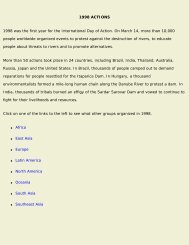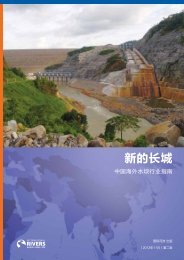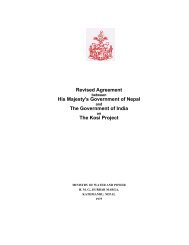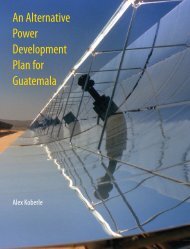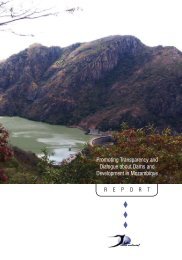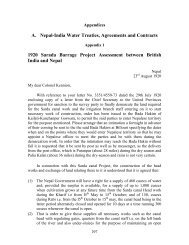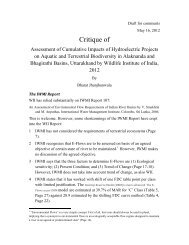Proposed Power Development Plan (PDP) 2012 - Palang Thai
Proposed Power Development Plan (PDP) 2012 - Palang Thai
Proposed Power Development Plan (PDP) 2012 - Palang Thai
- No tags were found...
You also want an ePaper? Increase the reach of your titles
YUMPU automatically turns print PDFs into web optimized ePapers that Google loves.
<strong>Proposed</strong> <strong>Power</strong> <strong>Development</strong> <strong>Plan</strong> (<strong>PDP</strong>) <strong>2012</strong>and a Framework for Improving Accountability and Performance of <strong>Power</strong> Sector <strong>Plan</strong>ningUnder the Energy Industry Act, the Abhisit Vejjajiva administration approved two plans: the Renewable Energy<strong>Development</strong> <strong>Plan</strong> which called for increasing the share of renewable energy to 20% within 15 years (2009), andthe 20-year Energy Efficiency <strong>Plan</strong>, which set the goal of reducing energy intensity by 25% compared to year 2005,within 20 years. Energy intensity is a measure of the energy ineffiency of the economy, and is defined as the energyconsumed to produce a unit of GDP. The Yingluck Shinawatra government in August 2011 reaffirmed the 25%energy intensity reduction target and set a goal of meeting 25% of <strong>Thai</strong>land’s energy demand with renewable andalternative energy (Shinawatra, 2011).Though the stated government energy policy has the manifold objectives listed in bullet points above, “energysecurity” appears to be the overriding objective in power sector planning practice. In official documents, the term“energy security” is not well defined but is generally used to imply availability of energy supplies. In a review of 91academic, peered-reviewed articles on energy security, Brown (2011) found that “energy security” has four maindimensions: availability (of energy resources), affordability (prices of energy services), efficiency, and environmentalstewardship (Table 1).Dimension Explanation IndicatorsAvailabilityDiversifying the fuels used toprovide energy services as well asthe location of facilities usingthose fuels, promoting energysystems that can recover quicklyfrom attack or disruption, andminimizing dependence on foreignsupplier• Oil import dependence ;• Natural gas importdependence;• Dependence on Petroleumtransport fuelsPercent ofArticles82%AffordabilityProviding energy services that areaffordable for consumers andminimizing price volatility• Retail electricity prices;• Retail gasoline/petrol prices51%Energy andEconomicEfficiencyImproving the performance ofenergy equipment and alteringconsumer attitudes to reduceenergy price exposure andmitigate energy importdependency• Energy intensity (per GDP);• Per capita electricity use;• On-road fuel intensity ofpassenger vehicles34%EnvironmentalStewardshipProtecting the naturalenvironment and futuregenerations• Sulfur dioxide emissions;• Carbon dioxide emissions26%Table 1: Four dimensions to energy security, from a search of 91 academic, peer-reviewed articles. Source:Brown, 2011.The <strong>Thai</strong> government energy policy guidelines stipulated in the Energy Industry Act do include the four dimensionsof energy security cited by Brown. However, there has been little or no linkage between power sector planningpractice and the multi-dimensions of “energy security” as enshrined by the law. In other words, there has neverbeen a systemic evaluation of the outcome of the power sector planning process with respect to the energy policyframework. The various <strong>PDP</strong>s in the past tended to over-emphasize availability of electricity supply at the expenseof environment, overall sector economic and energy efficiency, and price to consumers.To ensure and improve the accountability of the <strong>PDP</strong> process to the government policy objectives, we propose aframework for evaluating the outcome of <strong>PDP</strong>s reflecting the four dimensions summarized by Brown as shown inTable 2. For each dimension of energy security, we propose a set of simple indicators, such as percentage of energyimports, cost of electricity bills, electrical energy intensity and total greenhouse gas emissions, to be used forevaluating and comparing performance of the <strong>PDP</strong> with respect to different policy objectives.8




